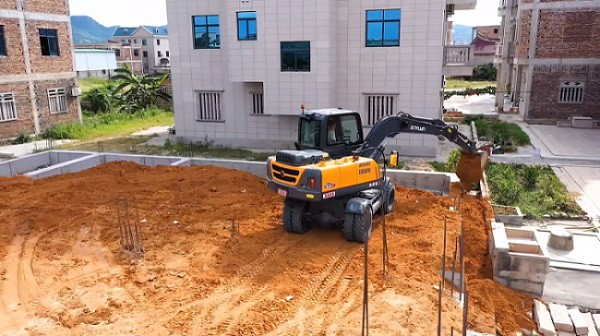Excavators often have abnormal failures in winter, which greatly hinders the construction efficiency. At low temperature in winter, some operators found that the excavator did not swing when it was just started, or there was swing jitter, but it was normal after a period of operation. This article will analyze and explain the failure of no action or shaking of the machine in winter, for reference only.
1. Cause analysis
According to the fault phenomenon, under normal conditions, there are several reasons for no single slewing action or slewing jitter:
1) There is no pilot pressure for swing, so the swing main valve rod cannot be opened.
2) The main swing valve is stuck or stuck in a certain position.
3) There is internal leakage fault in the swing motor.
4) The slewing reducer is faulty and the gear is stuck.
5) The slewing brake cannot be opened, and the brake release oil circuit fails. Including brake release solenoid valve failure.
6) The slewing ring is stuck due to the slewing ring fault, including ball bearing deformation.
The failure point also has the abnormal factor of low temperature in winter. For example, the following two points.
7) Freezing between slewing ring and reducer caused by water inflow and icing inside slewing ring.
8) The brake cannot be opened due to the viscosity of hydraulic oil, and the brake cannot be released.
2. Which machines are prone to failure
Some old excavators or excavators with too high viscosity of hydraulic oil will have faults such as points 7 and 8. Especially in winter in cold regions, if it has rained and snowed, it is easy to get rain and snow from the poorly sealed central rotary joint, the bottom of the rotary reducer, and the grease inlet of the slewing ring. This causes icing on the inner ring gear of slewing ring. When the excavator is parked overnight and the motor car is started in the morning, the kinematic viscosity of hydraulic oil is very high, which is also called low pour point. When the pour point is very low, the viscosity of hydraulic oil is very large at low temperature, and the flow resistance is also very large. Generally, the brake release pressure is between 1.2-2.9MP, and the oil film formed by the hydraulic oil with high viscosity will also produce very large resistance, resulting in the greater force of the brake piston. In addition, the low temperature hydraulic oil has great resistance to flow, so the brake piston cannot be opened or fully opened with normal pressure of 1.2-2.9MP. As a result, the slewing action cannot be realized or the action is stuck and jitters.
3. Solutions
Detect the pilot pressure and overflow pressure of swing respectively. The pilot pressure of most models is generally between 3.5MP-4.2MP, and the main overflow pressure is between 27MP-32MP. It varies according to the brand and model. If there is no abnormal pressure, the faults in points 1, 2 and 3 can be basically eliminated. The remaining points 4, 6 and 7 need to remove the components inside the slewing reducer and slewing ring for visual inspection. The fault points 5 and 8 are generally difficult to judge. The inspection method is to disassemble and inspect the swing solenoid valve, the components and oil circuit of the swing brake.

